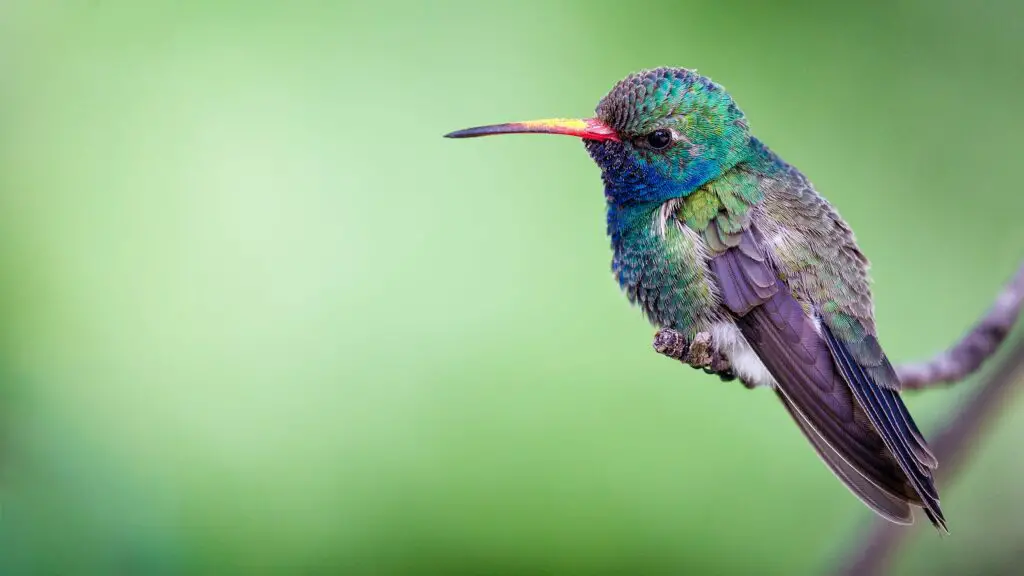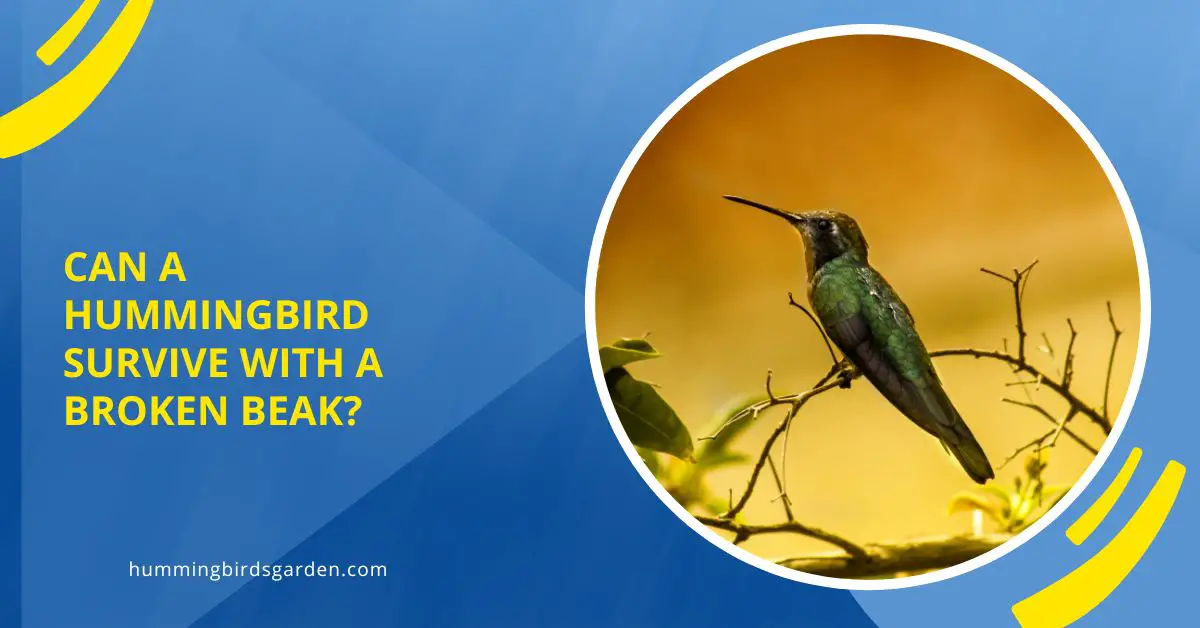Hummingbirds are fascinating creatures, known for their brilliant colors, incredible agility, and lightning-fast wing movements. However, their delicate beaks can sometimes be a cause for concern when damaged.
In this article, we will discuss the likelihood of a hummingbird’s survival with a broken beak and explore the various factors that come into play.
The short answer is that a hummingbird may survive with a broken beak, depending on the severity of the injury and the bird’s ability to adapt. Keep reading to learn more about the role of a hummingbird’s beak, the potential consequences of a broken beak, and ways to help these amazing creatures in need.
The Vital Role of a Hummingbird’s Beak
The Beak’s Purpose
A hummingbird’s beak serves multiple purposes. It helps them feed on nectar, insects, and spiders, making it a crucial part of their survival. Additionally, their beaks are essential tools for preening their feathers and defending their territory against intruders.
Adaptations for Feeding
Hummingbirds have specialized beaks that allow them to access the nectar in tubular flowers. Their long, slender beaks are designed to accommodate their long, extendable tongues, which are used to lap up nectar quickly and efficiently.
The Impact of a Broken Beak on a Hummingbird
Challenges in Feeding
A broken beak can pose significant challenges for a hummingbird. The severity of the injury determines how difficult it may be for the bird to feed. If the beak is only slightly damaged, the hummingbird might still be able to reach the nectar in flowers or feeders. However, if the break is more severe, the bird may struggle to feed itself, leading to malnutrition and eventually death.
The Healing Process
Birds, including hummingbirds, can recover from broken beaks if given the proper care and enough time. However, the healing process can be slow and may not always be successful. In some cases, the beak might not grow back to its original shape or length, which can affect the bird’s ability to feed.

Helping a Hummingbird with a Broken Beak
Providing Appropriate Food Sources
One way to help a hummingbird with a broken beak is to ensure it has easy access to food. You can set up a hummingbird feeder with a shallow dish, allowing the bird to feed without having to insert its beak too deeply. You may also consider providing a dish of small insects or soft fruits, which can be easier for the hummingbird to consume than nectar from flowers.
Monitoring the Bird’s Progress
Keep an eye on the hummingbird to ensure it is adapting well to its new feeding method. If you notice the bird is not feeding, it may be necessary to contact a local wildlife rehabilitator or veterinarian for assistance.
When to Seek Professional Help
Assessing the Severity of the Injury
If the hummingbird’s beak is severely damaged or the bird appears to be in pain, it is best to contact a wildlife rehabilitator. They have the knowledge and resources to provide the necessary care for the bird’s recovery.
Handling a Hummingbird
If you must handle a hummingbird, be sure to do so gently and with great care. These birds are fragile and can easily be injured. Use a soft cloth or tissue to gently pick up the bird and place it in a small box with air holes for transport to a professional.
Conclusion
While a hummingbird with a broken beak may face challenges in feeding and caring for itself, it is possible for them to survive and even recover, depending on the severity of the injury and the availability of proper care. As concerned individuals, we can help these remarkable creatures by providing suitable food sources and monitoring their progress. In cases of severe injury or distress, it’s essential to contact a wildlife rehabilitator or veterinarian for professional assistance.
FAQ
- How long does it take for a hummingbird’s beak to heal?
The healing process for a hummingbird’s beak can vary depending on the severity of the injury and the individual bird’s overall health. It can take anywhere from a few weeks to several months for the beak to heal, and in some cases, it may not return to its original shape or length.
- Can a hummingbird’s beak grow back?
Yes, a hummingbird’s beak can grow back, but the success of regrowth depends on the extent of the injury and the bird’s overall health. In some cases, the beak may not grow back to its original shape or length, which can affect the bird’s ability to feed.
- What should I do if I find a hummingbird with a broken beak?
If you find a hummingbird with a broken beak, you can help by providing a shallow dish of nectar or a hummingbird feeder, as well as a dish of small insects or soft fruits. Monitor the bird’s progress, and if it is not feeding or appears to be in distress, contact a local wildlife rehabilitator or veterinarian for assistance.
- How can I prevent my hummingbird feeder from causing injuries to hummingbirds?
To prevent injuries to hummingbirds, ensure that your feeder is clean and well-maintained. Check for any sharp edges or broken parts that could harm the birds. You can also opt for feeders with soft, flexible ports to minimize the risk of injury.
- Why is a hummingbird’s beak important for its survival?
A hummingbird’s beak is crucial for its survival as it helps the bird feed on nectar, insects, and spiders. The beak is also essential for preening and maintaining their feathers, as well as defending their territory against intruders.

















